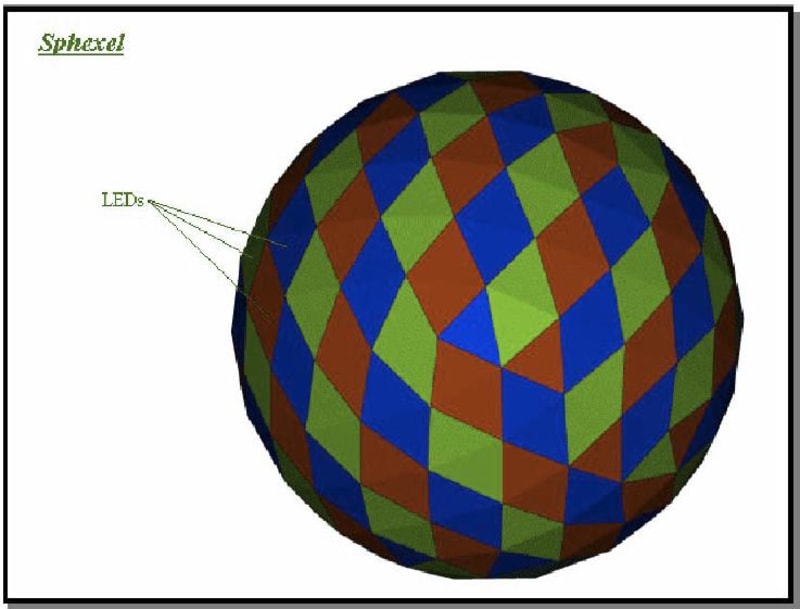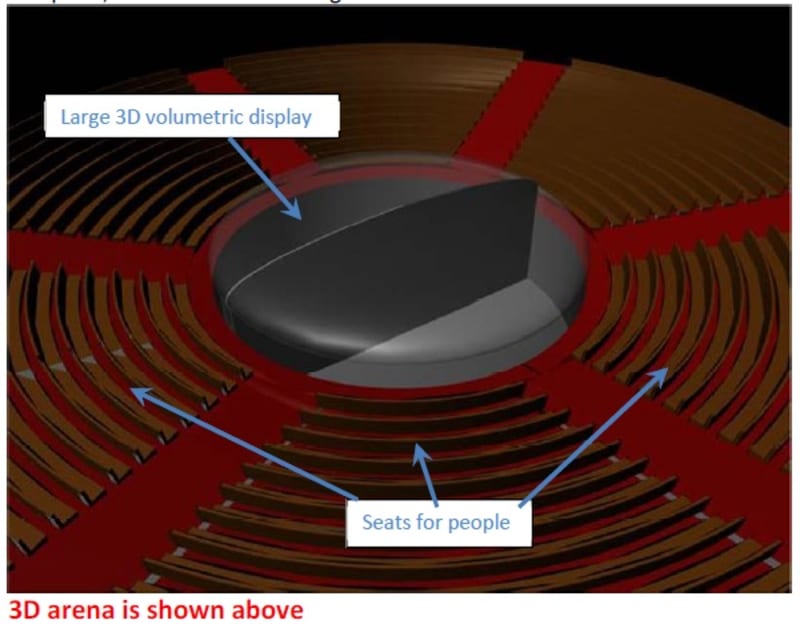Creating lifelike 3D volumetric images is of paramount importance to maximize realism for displays. In order to create a lifelike 3D volumetric image I have successfully developed a new concept after spending several years to research. The concept is described below. The development of my 3D Display refers to the well-known swept-volume technique, which is characterized by its comparatively simple system configuration. Compared to other approaches the new 3d display is a compact, light, and easy to transport system of modular design. As it consists of standard components, the display is also inexpensive and easy to maintain.
This is a new 3D volumetric display with clear picture and super clear depth; it has a 360 degree horizontal and 270 degree vertical viewing angle. It is entirely different from existing 3D TVs which produce translucent images even if input is solid image. This new 3D display can provide variable occlusion (0-100%) and variable opacity (0-100%) and partial or full cross-section view ability and cutaway view ability without losing parallax or perspective. The major novelty of the 3D display I invented is that it gives more clear and realistic picture. In existing designs light from front and back of an object will pass through resulting in clogged image. In my 3D display this problem was remedied by using a new individual picture cells named sphexel (spherical picture cells). This sphexel has control over the direction of light to be emitted thus solving the above problem. The sphexels provide occlusion and opacity without losing perspective or parallax. Using this we can make images of 3D display from completely solid to translucent to transparent. The new 3D volumetric display can be used for R&D of complex systems especially for medical imaging. Image of 3D Volumetric Display Unit is given Below.
Working Procedure
Every frame, approximately 100 planar cross-sections of a 3-D volume are displayed on the LEDs in this volumetric 3-D display. For example, the 3-D scene is computationally decomposed into a series of "slices," which can be rectangular, disc-shaped, or helical cross-sectioned, whereupon they are displayed from a display surface undergoing motion. The image on the 2D surface (created by LEDs embedded in the surface) changes as the surface rotates. Due to the persistence of vision humans perceive a volume of light. The light-scattering characteristic of LED enclosures assures that it is visible from angles it is supposed to be.
Essence of the system is an planar surface where sphexels are arranged on it or helically arranged rods (like DNA molecules) and Sphexels arranged on each rods. The planar surface or rods are rotated at 1800 rpm and Sphexels are illuminated intermittently. Since rods are rotating we will not see the rods, we only see the part of the Spexels that is being illuminated for a fraction of a second. (Just like we can see rotating fan's leaves in fluorescent light but not in daylight) If input is programmed for an image or movie, we can view movie or picture on the rods.
Like this entry?
-
About the Entrant
- Name:Diji Jayakaran
- Type of entry:individual
- Patent status:pending








